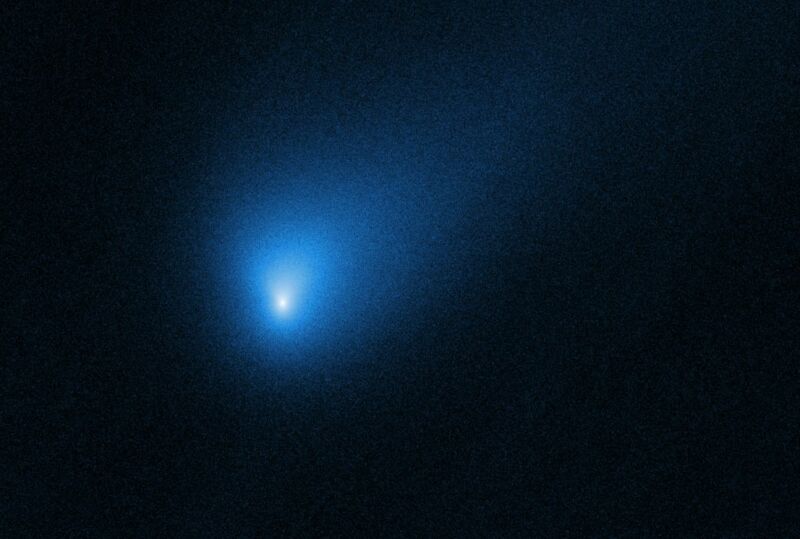
Comets are essentially time capsules. Most formed during the early days of our Solar System, amid the disk of dust and gas around the Sun. The majority of this dust and gas coalesced into planets, but some of the leftovers—especially toward the outer edge of the disk—wound up in comets.
Because comets spend much of their time in cold expanses far from the Sun, their interiors are relatively well preserved. Thus most comets offer scientists an unprecedented view of what conditions were like in the earliest days of the Solar System before planets formed.
To date, astronomers have studied hundreds of comets in our Solar System to understand its origin. But now, they've been able to look at the interior of an interstellar comet for the first time. In two new papers published in Nature Astronomy, scientists trained two of their most powerful observatories on 2I/Borisov, the first confirmed comet to enter our Solar System from elsewhere.
Scientists learn about a comet's interior by observing gases produced in its coma, the envelope surrounding the nucleus where sublimation has occurred. So to understand 2I/Borisov, astronomers observed its coma as it passed through our Solar System at a relative velocity of 33km/s.
Living a chill life
In one paper, astronomers who used the Hubble Space Telescope to observe the comet for a month in December and January found an abundance of carbon monoxide three times higher than any comet previously observed in the inner Solar System.
Separately, an international team of scientists observed the comet with the Atacama Large Millimeter/submillimeter Array in Chile, a collection of 66 radio telescopes, in December. The array's observations, too, found an abnormally high amount of carbon monoxide in the comet.
The researchers concluded that 2I/Borisov must have formed in an environment rich in carbon monoxide, likely in the icy, outer regions of the disk of material around a newly formed star. Moreover, the scientists believe, after being ejected from this early Solar System, 2I/Borisov must have remained very cold as it spent hundreds of millions, or even billions, of years in interstellar space before nearing our Solar System.
Due to the abundances of material in its nucleus, scientists speculate the comet has spent its entire existence at temperatures of 25 Kelvin or lower—within a few dozen Celsius degrees of absolute zero. Given this, 2I/Borisov probably originated around a red-dwarf star, the most common kind in the Milky Way Galaxy. Such stars are much cooler than the Sun.
This comet is just the second object that astronomers have confirmed to have interstellar origins, following 'Oumuamua, the bizarre cigar-shaped object discovered in 2017 that is now hurtling away from the Sun.
Nature Astronomy, 2020. DOI: 10.1038/s41550-020-1087-2 (About DOIs).
Nature Astronomy, 2020. DOI: 10.1038/s41550-020-1095-2 (About DOIs).
https://news.google.com/__i/rss/rd/articles/CBMiZ2h0dHBzOi8vYXJzdGVjaG5pY2EuY29tL3NjaWVuY2UvMjAyMC8wNC9hc3Ryb25vbWVycy1wZWVyLWludG8tYW4taW50ZXJzdGVsbGFyLWNvbWV0LWZvci10aGUtZmlyc3QtdGltZS_SAW1odHRwczovL2Fyc3RlY2huaWNhLmNvbS9zY2llbmNlLzIwMjAvMDQvYXN0cm9ub21lcnMtcGVlci1pbnRvLWFuLWludGVyc3RlbGxhci1jb21ldC1mb3ItdGhlLWZpcnN0LXRpbWUvP2FtcD0x?oc=5
2020-04-20 21:04:00Z
52780738338330
Tidak ada komentar:
Posting Komentar